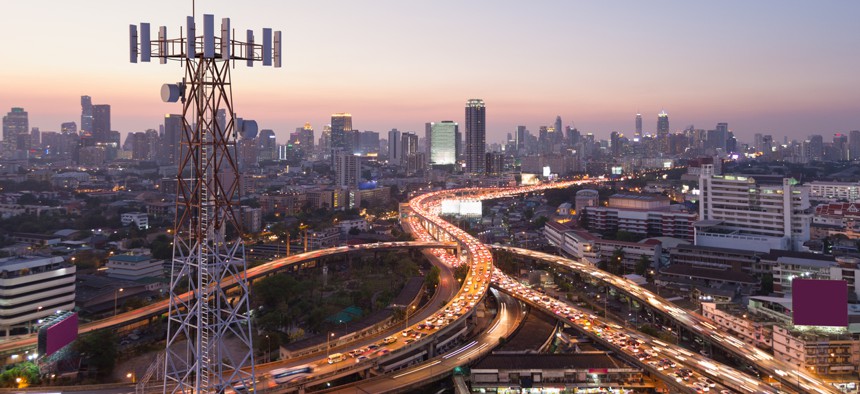sponsor content What's this?
Innovations in Public Safety: How Agencies Can Secure their 5G Networks

iStock/Kinwun
Presented by
Verizon 4.29.21

What will it take for public safety leaders to successfully integrate 5G technology into their existing workflows safely and securely? At a recent roundtable discussion, experts across government, industry and academia helped answer this question.
From delivering high-speed broadband data services and applications to enabling how critical information can be used and shared by teams, 5G is changing how public safety agencies operate. However, as agencies look to adopt the latest generation of broadband, security remains a top concern. With multiple endpoints and users across the network, organizations need to ensure security doesn’t take a backseat.
At a recent roundtable discussion, sponsored by Verizon and produced by GovExec, experts across government, industry and academia discussed how agencies can improve connectivity across their networks — without sacrificing security.
Unlock the Keys to Secure 5G
As with any effort to embrace innovation, security must be a key consideration for public safety agencies looking to tap into the technology. That’s especially true with entities managing hundreds of thousands of sensitive cases and datasets. Moreover, government-specific security standards and regulations put additional pressure on organizations.
Glenn Jones, chief information officer at the Dahlgren Division of the Naval Surface Warfare Center, said he’s especially concerned about security because of the work his agency does.
“When you start talking about [the] Department of Defense and start talking about federal information traveling through the airways, you have to be careful, and 5G’s no exception,” he said at the roundtable. “So we've got to make sure we double down on all of our encryption and the devices on each end to make sure that we're able to keep our data safe.”
Brandon Abley, who serves as the technology director at the National Emergency Number Association, has experienced different security hurdles.
“From a 911 perspective, it would be a lot easier to secure our 911 service, if . . . we had one carrier, and if we had one 911 service, but in the United States, we have . . . several 911 services that are all stitched together,” he explained.
Securing everything across all of those domains is complicated, and there is a significant number of attack vectors, he added.
Striking a balance between innovation and security will require a multi-pronged approach that doesn’t involve merely securing the end device.
“Part of the discussion that we are having pretty deeply with many customers is: What are we doing to secure the supply chain that leads up to the 5G network? And how do we ensure that the network itself has the level of security that it needs to provide some of the solutions?” said John Harris, executive director of federal civilian at Verizon Business.
It starts with building a base of trusted partners and ensuring the network components themselves are secure. From there, agencies must take other measures to enhance security, including ensuring the physical security of a tower or a trusted SIM card.
Though these security considerations are complex, and may be overwhelming to some, Harris is optimistic agencies can achieve successful outcomes.
“If we can [deploy 5G] all in a secure environment with FedRAMP clouds, and . . . end-to-end security, I think we're going to hit a home run,” he said.
An Opportunity for Greater Connectivity Services
While 5G poses some security challenges to public safety agencies, it also opens up a plethora of opportunities.
Whereas an existing 4G environment limits the number of devices permitted in a square kilometer, 5G — and Ultra Wideband in particular — enables more than 1 million devices in a square kilometer of ground.
“Now, everything in that area can theoretically be smart, and it could theoretically talk to each other, and then back to the network,” Harris said. “All of these things can help us with removing manual . . . intervention or system errors at the edge and getting the information again.”
For example, the multiple endpoints that comprise the 5G ecosystem can be leveraged to build smart campuses, communities and cities.
“The more we can spread the data points, the endpoints out and get more intelligence back into [an agency’s] hands, the faster we're going to be able to make good decisions,” Harris said.
This article is part of GovExec’s “5G on the Frontlines” series, produced by GovExec in collaboration with Verizon. Click on the links below to read other articles in this series.
Innovation at the Frontlines: How Public Safety Agencies Can Embrace the 5G Revolution
Connectivity First: Public Safety Agencies Embrace a 5G Future
This content is made possible by our sponsor, Verizon. The editorial staff was not involved in its preparation.
NEXT STORY: How 5G Will Shape the Future of Public Safety


